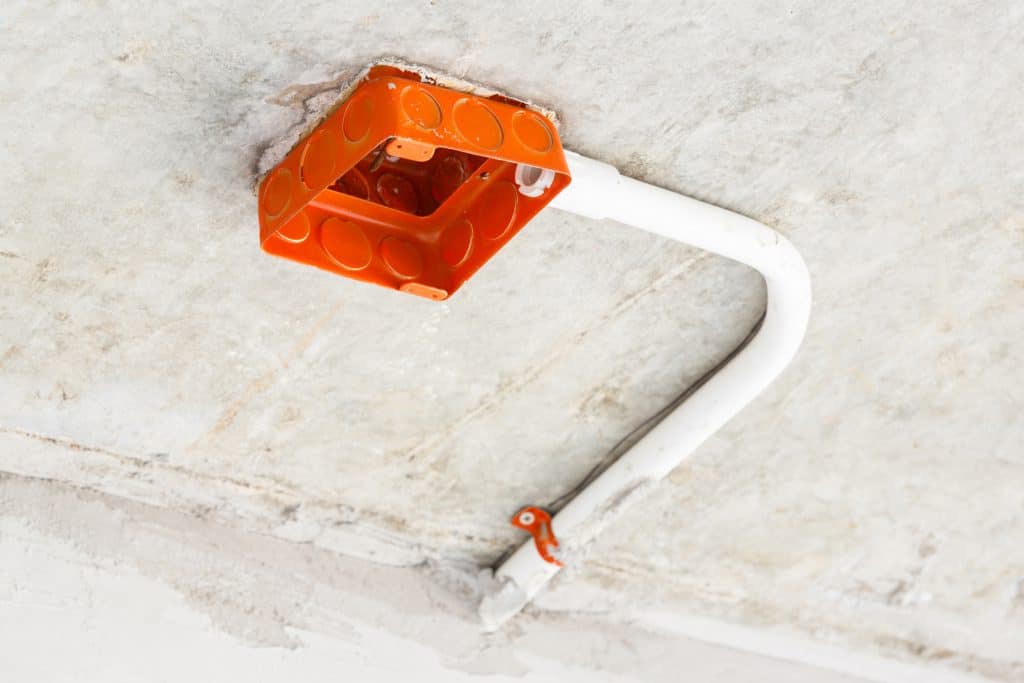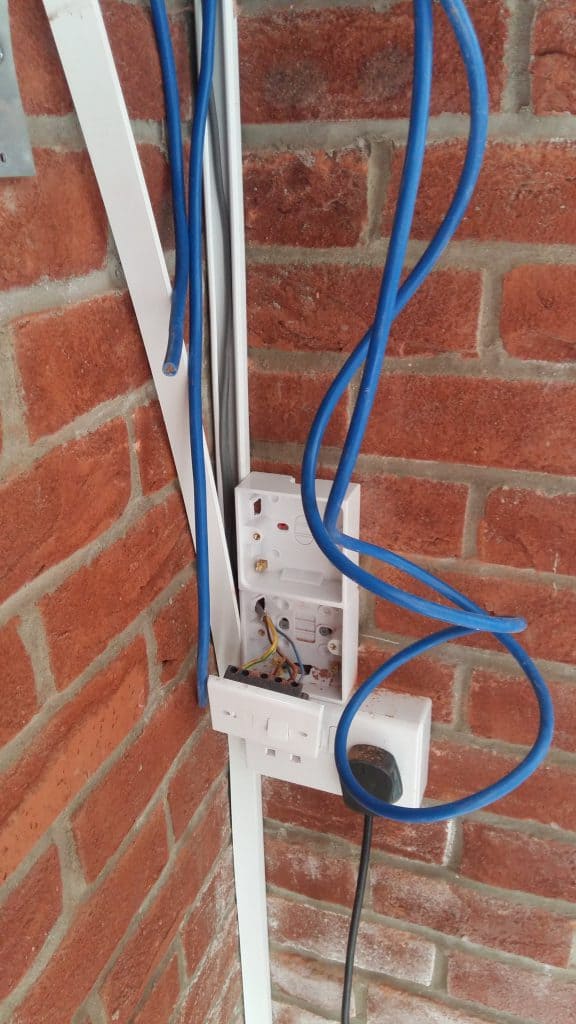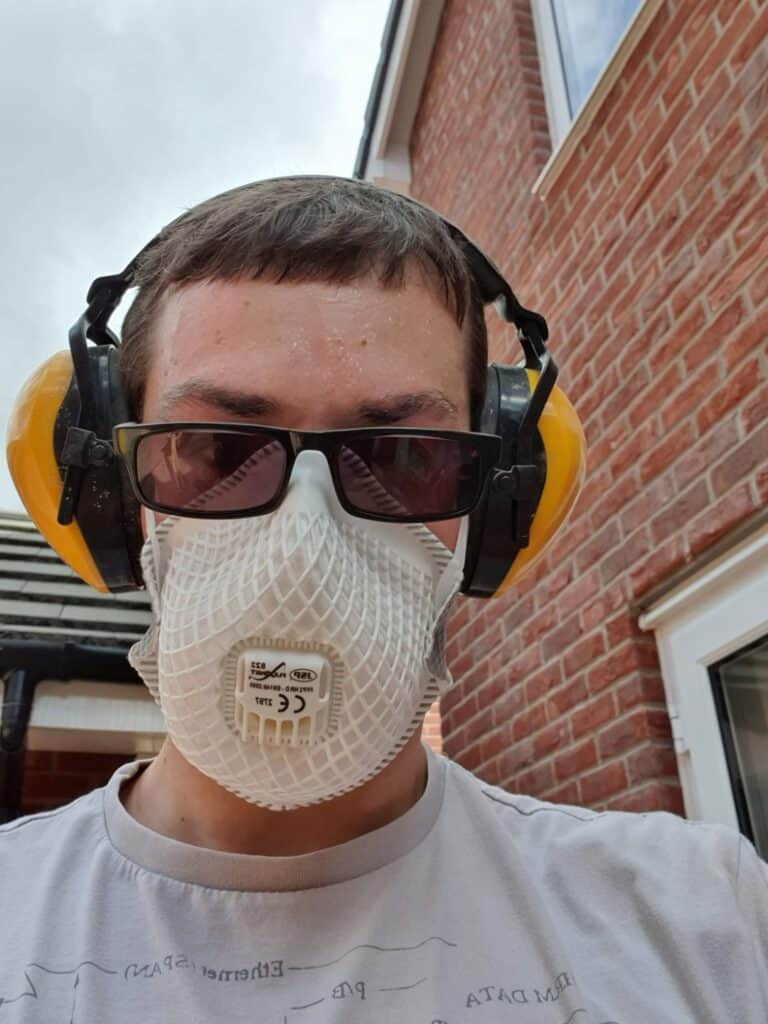Are you trying to lay cable or wiring in a location with concrete? If so, you need to make sure you do so safely. There are numerous types of cables available, and all of them have their benefits and drawbacks. You need to make sure the cable is going to work well for whatever function you intend
You also need to make sure you are safe both as you are laying the cable and after you are finished with the job. With all of this in mind, can you install Romex through concrete? What do you need to know?
Take a look at some helpful pieces of advice below, and remember to reach out to a professional if you ever feel uncomfortable laying wires.
What Are Romex Cables?

Romex is the trade name of one of the most popular types of NM sheathing, which stands for non-metallic. Romex is commonly used in residential branch wiring, and there is a good chance that this type of cable is present in your home as well. A few important points to know about Romex cables include:
- Romex is one of the most common types of residential wiring. It is categorized as a non-metallic cable, usually abbreviated NM or NMC.
- Similar to other NM cables, Romex has two separate layers of insulated conductors contained in a non-metallic covering. Romex is non-conducting, flame-resistant, and moisture-resistant. Unlike numerous other cables you might have in your home, Romex is allowed in damp environments, including basements.
- In addition, Romex cables are also categorized as UF, or underground feeder cables. This means there is a solid plastic core.
With these basics in mind, it is important to understand some of the rules and regulations that apply to Romex cables. These include:
- These types of cables are not allowed in any commercial construction buildings. They are also not permitted in any residential construction buildings that are higher than three stories.
- These cables need to be clamped, secured, and protected. They must be appropriately attached to all fixtures, junction boxes, and device boxes.
- Any support devices that have the potential to damage these cables, including bent Nails and overdriven staples, are not allowed.
- All cables have to be secured within 12 inches of any junction boxes and panels to which they are attached. Furthermore, they have to be secured at intervals that are no greater than 4.5 ft apart. If you do not secure these cables appropriately, they can sag, making them easier to damage.
Even if these cables are technically allowed and certain residential construction buildings, it is important to take a look at local community guidelines and HOA restrictions. There are some communities that still do not allow them at all.
The Most Common Locations where Romex Cables Are Used

Clearly, there are certain situations where Romex might work well and other situations where they do not. It is important to take a look at a few common examples of appropriate Romex cable uses. They include:
- Running the cable inside of wall cavities that have covered, finished wall surfaces. The cable should not be accessible from this location.
- Running Romex where it will be ‘semi-accessible’, such as within conduit which is not sealed away. See the next section for further information on this point.
- Using Romex inside voids in tile walls and masonry block where the walls are not going to get wet.
- Placing these wires between studs and joists where the cables are recessed and away from the frames.
…But Don’t Use Romex Here
These are just a few of the most common locations where Romex cable might be used. At the same time, it is important to look at a few common violations where Romex cable should not be used. They include:
- Romex cable cannot be attached across the front face of studs or ceiling joints. It is too exposed to physical damage in this location.
- It cannot be attached to the front face of concrete because this leaves it exposed to physical damage. Instead, it has to be installed through bored holes in the concrete.
- Even though Romex cable is protected, it cannot be installed uncovered or unprotected on the outside, as it will be damaged.
What are a few other points you need to know about installing Romex wiring?
What About Using Romex Wiring in Exposed Locations?

If you plan on using Romex wiring in exposed locations, then you need to use a rigid conduit. This conduit will protect the wiring against physical damage. The most common type of conduit that people use to protect Romex wiring is called electrical metallic tubing, or EMT; however, you can also use a flexible metal conduit (FMC) or an intermediate metal conduit (IMC).
IMC is sturdier and provide a greater degree of protection against corrosion. A plastic conduit is one of the most common types of conduits that are used if you are running v wire underground. If you want the best protection possible, then you might want to go with a rigid metallic conduit instead.
As always, if you are unsure of the best type of conduit to use in your specific situation, then you may want to reach out to a professional who can help you.
If you are trying to find a conduit for your Romex wires, you need to take a look at the wire gauge. That way, you find the right type of conduit. A few key points to note include:
- A half-inch conduit can tolerate up to 9 12-gauge wires.
- A half-inch conduit can tolerate up to 12 14-gauge wires.
- A three-quarter-inch conduit can tolerate up to 16 12-gauge wires.
- A three-quarter-inch conduit can tolerate up to 22 14-gauge wires.
Remember to keep these limitations in mind when you are trying to find the right time to it for your Romex wires.
Romex Wiring Pros and Cons

If you are trying to find the right type of wire for your specific situation, then you may be thinking about using Romex cables. Romex wiring is one of the most common types of NM wiring and is popular among people who are trying to do their projects on their own. If you are thinking about using Romex wiring, you might be able to save a lot of money. What are a few benefits and drawbacks of using NM Romex wiring?
The Benefits of Romex Wiring
A few key benefits of Romex wiring include:
- It is possible to install Romex wiring in a plastic box without having to ground the entire box.
- Romex wire is significantly lighter than traditional metallic sheathed wiring. Therefore, it is much easier to handle than other types of wires.
- Romex wiring has PVC sheathing. This makes it far easier to unspool and straighten out, shortening the amount of time it takes to finish the projects.
- The smooth Romex sheathing is also a bit slippery. This means that if you are trying to drag the wiring through bore holes in concrete, it should be pretty easy to do so.
- If you need to strip Romex wiring for any reason, the sheathing the plastic instead of metal. This makes it much easier for you to strip and rip the wires using a utility knife.
- Romex cable is easier to attach to framing members, as you can do so using plastic cable staples, which are light and cheap.
- When compared to traditional wiring, Romex is much cheaper, allowing you to save money on the cost of your project.
Clearly, there are a lot of advantages if you decide to go with Romex wiring. At the same time, this is not going to be the right choice for every situation. You need to think about some of the drawbacks of using this type of wiring as well.
The Drawbacks of Romex Wiring
A few important drawbacks to note when using Romex wiring include:
- You cannot use Romex wiring outdoors, anywhere, unless it comes with a UF rating (which some of them do). If you use UF Romex cable, you need to run this underground, as it cannot be exposed.
- You are not permitted to use this type of wiring in any commercial location.
- You are not permitted to use this type of wiring in any building that is over three stories tall.
- There are some residential communities and neighborhoods that do not allow Romex wiring.
- In certain situations, you need to protect Romex wiring with additional installations.
- This is not the most durable type of cable, and it cannot stand up to physical damage that well.
Before you decide to use this type of cable, it is important to take a look at local regulations. That way, you can compare the benefits and drawbacks of Romex wiring, deciding if this is right for you.
How Do I Decide Which Type of Wiring I Need?
As you are taking a look at the options available, you may be wondering which type of Romex wiring you need. First, if you are running Romex wiring outside, then it needs to be underground. In this case, you need Romex “UF” wiring.
Then, you need to decide which size wire you need. Even though this is counter-intuitive, the higher the gauge is, the smaller the wire. This means that a 14 gauge wire is smaller than a 12-gauge wire.
You cannot use Romex wire for larger appliances, such as stoves and heaters, as they usually require 8 and 10-gauge wire. Then, when you try to figure out which type of Romex wire to use, you need to think about the circuit. If you have a 20-amp breaker, then you cannot use 14-gauge wire. You also need to protect 14-gauge wire if you use a 15-amp breaker. Therefore, if you are in doubt about which type of wire to use, use 12-gauge wire.
This can be a difficult decision, so it is important for you to think carefully before you make your purchase. If you have any doubts about the type of wire you are using, you should reach out to a professional who can help you. That way, you protect yourself and the internal electric circuits of the building.
The Top Safety Tips To Remember When Working with Romex Cable
Before we wrap up, a quick word on some safety tips when working with Romex. Clearly, the below is the bare minimum you need to wear:

Kidding!
If you are working with this type of cable on your own, it is important to remain safe. A few critical tips to keep in mind include:
- It should be okay to touch the outside of Romex wires as long as the insulation is still intact; however, you still need to wear the right type of safety equipment.
- You should always make sure the power is turned off before you start working with these wires.
- It is a good idea to wear rubber gloves and rubber shoes to protect yourself against possible shocks.
- You should also wear safety goggles to protect your eyes against potential sparks.
- Try to keep one hand in your pocket at all times to reduce the chances of completing the circuit and shocking yourself.
- Do not touch the wires if you think the insulation has been damaged.
- If you are working with these wires in a dark location, you need to make sure you can see clearly. This means you have a flashlight with you.
Finally, remember that if you are ever uncomfortable with what you are doing, you need to reach out to a professional who can help you. Always place safety at the top of your priority list when you are working with Romex cables.
Frequently Asked Questions About Romex Cable
There are several common questions people ask about using Romex cable. These include:
It depends on the specific type of application. Romex cable and wiring are not permitted in any commercial institutions. This type of cable is only allowed in residential locations if the building is less than three stories high. You should take a look at your HOA or community guidelines as well to make sure this type of cable is allowed.
Usually, this type of cable is used with lighting and outlet circuits in your home. It depends on the exact nature of your home, so you should reach out to a professional if you have questions about when you should be using this type of cable.
If you are thinking about using this type of table outside, then you may want to strip it and run it through a conduit. Remember that you need to be very careful when you are stripping this wiring. When you remove insulation, you could exposure the wire, so make sure you use the right type of conduit.
No, you are not allowed to run Romex across the face of concrete. This does not provide any additional protection for the cable, meaning that it is exposed to physical damage. This is a significant safety hazard.
Yes, Romex can pass through concrete without any additional protection, but it should not be exposed to a situation where it may suffer physical damage.
Remember that if you ever have any questions or concerns about the type of cable you are using, you should reach out to a professional who can help you.
